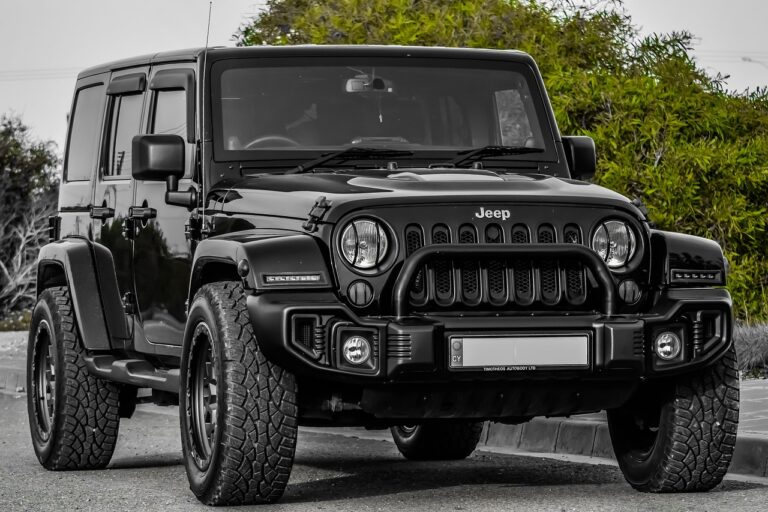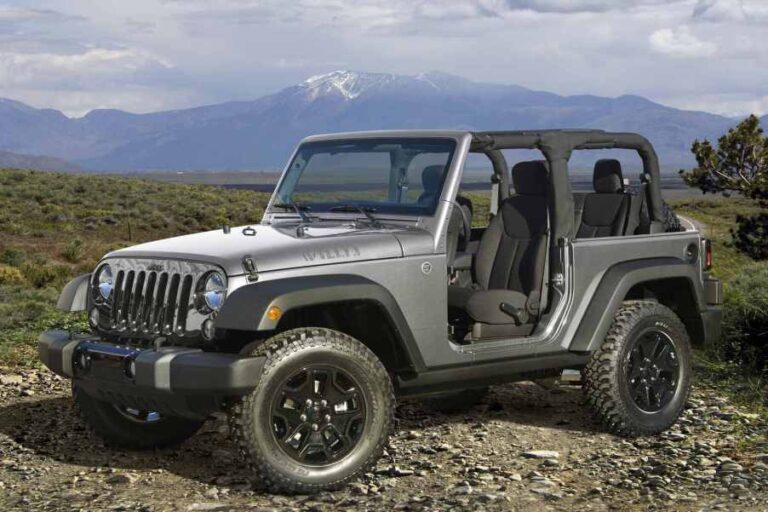How Much Oil Does Jeep Wrangler Take: Your Comprehensive Guide to Engine Lubrication
How Much Oil Does Jeep Wrangler Take: Your Comprehensive Guide to Engine Lubrication jeeps.truckstrend.com
For any Jeep Wrangler owner, understanding the nuances of engine maintenance is paramount, and perhaps no aspect is more critical than knowing "How Much Oil Does Jeep Wrangler Take." This isn’t just about pouring in some lubricant; it’s about providing the lifeblood for your vehicle’s engine, ensuring its longevity, optimal performance, and readiness for both daily commutes and rugged off-road adventures. Proper oil levels and the correct type of oil are foundational to preventing costly engine damage, maintaining fuel efficiency, and preserving the legendary capability of your Wrangler.
This comprehensive guide will demystify the topic, providing you with the essential knowledge, practical advice, and specific capacities for various Jeep Wrangler models and engine types. Whether you’re a seasoned off-roader or a new Wrangler enthusiast, mastering this fundamental aspect of vehicle care will empower you to keep your Jeep running strong for years to come.
How Much Oil Does Jeep Wrangler Take: Your Comprehensive Guide to Engine Lubrication
Understanding Engine Oil’s Vital Role in Your Jeep Wrangler
Before diving into specific capacities, it’s crucial to appreciate why engine oil is so indispensable, especially for a vehicle as versatile and hardworking as the Jeep Wrangler. Engine oil performs several critical functions:
- Lubrication: It creates a thin film between moving metal parts, reducing friction and wear. Without proper lubrication, components would grind against each other, generating immense heat and leading to rapid failure.
- Cooling: As it circulates, oil absorbs heat from hot engine components like pistons and cylinder walls, helping to dissipate it and prevent overheating.
- Cleaning: Engine oil contains detergents and dispersants that help suspend dirt, sludge, and contaminants, preventing them from accumulating and forming deposits. These impurities are then carried to the oil filter.
- Sealing: Oil helps create a seal between the piston rings and cylinder walls, preventing combustion gases from escaping past the pistons and maintaining compression.
- Corrosion Protection: Additives in the oil protect internal engine components from rust and corrosion, which can be caused by moisture and acids produced during combustion.

For a Jeep Wrangler, which often endures challenging conditions like extreme temperatures, dusty trails, water crossings, and heavy loads (towing or carrying gear), the oil works even harder. Maintaining the correct oil level and quality is not just good practice; it’s essential for the survival of your engine under these demanding circumstances.
Factors Influencing Jeep Wrangler Oil Capacity
The amount of oil your Jeep Wrangler needs isn’t universal. It primarily depends on a few key factors:
- Engine Type and Size: This is by far the most significant determinant. Different engines have varying internal volumes, sumps (oil pans), and passages, all dictating how much oil they require to function properly. A larger engine generally needs more oil than a smaller one.
- Model Year: As Jeep evolves its Wrangler lineup, engines change. For instance, a 2007 JK Wrangler uses a different engine (3.8L V6) than a 2012-2018 JK (3.6L Pentastar V6) or a 2018-present JL (2.0L Turbo or 3.6L Pentastar). Each of these engines has a distinct oil capacity.
- Oil Filter Size: While typically accounted for in the manufacturer’s stated capacity, the oil filter itself holds a small amount of oil. When you change your oil, you also change the filter, which means the total fill capacity includes the volume needed to saturate the new filter.

Jeep Wrangler Oil Capacities by Engine Type and Model Year

To accurately determine how much oil your specific Jeep Wrangler takes, you’ll need to identify its model year and the engine it’s equipped with. Below are the common capacities for various popular Wrangler models. Always consult your owner’s manual for the most precise and up-to-date information for your specific vehicle.
Jeep Wrangler JL/JT (2018-Present)
The current generation Wrangler (JL) and Gladiator (JT) truck share similar engine options:
- 2.0L Turbo (Hurricane) Inline-4:
- Capacity: Approximately 5.0 quarts (4.7 liters) with filter.
- Recommended Oil: 0W-20 Full Synthetic, meeting Chrysler MS-6395 specification.
- 3.6L Pentastar V6:
- Capacity: Approximately 6.0 quarts (5.7 liters) with filter.
- Recommended Oil: 5W-20 Full Synthetic or Synthetic Blend, meeting Chrysler MS-6395 specification. Some later models may recommend 0W-20. Always check your manual.
- 3.0L EcoDiesel V6:
- Capacity: Approximately 8.0 quarts (7.6 liters) with filter.
- Recommended Oil: 5W-40 Full Synthetic, specifically meeting FCA MS-11106 or API CJ-4/CK-4 specification for diesel engines.
- 6.4L V8 (392 Wrangler):
- Capacity: Approximately 7.0 quarts (6.6 liters) with filter.
- Recommended Oil: 0W-40 Full Synthetic, meeting Chrysler MS-12633 specification.
Jeep Wrangler JK (2007-2018)
The JK generation saw a significant engine change midway through its production run:
- 3.6L Pentastar V6 (2012-2018 models):
- Capacity: Approximately 6.0 quarts (5.7 liters) with filter.
- Recommended Oil: 5W-20 Full Synthetic or Synthetic Blend, meeting Chrysler MS-6395 specification.
- 3.8L V6 (2007-2011 models):
- Capacity: Approximately 6.0 quarts (5.7 liters) with filter.
- Recommended Oil: 5W-20 or 5W-30 Conventional or Synthetic Blend, meeting Chrysler MS-6395 specification.
- 2.8L CRD Diesel (International Markets, not common in US):
- Capacity: Approximately 6.5 quarts (6.1 liters) with filter.
- Recommended Oil: Specific diesel engine oil, often 5W-30 or 5W-40.
Jeep Wrangler TJ (1997-2006)
The TJ models are known for their robust inline-six engines:
- 4.0L Inline-6:
- Capacity: Approximately 6.0 quarts (5.7 liters) with filter.
- Recommended Oil: 10W-30 Conventional or Synthetic Blend.
- 2.5L Inline-4:
- Capacity: Approximately 4.0 quarts (3.8 liters) with filter.
- Recommended Oil: 10W-30 Conventional or Synthetic Blend.
Jeep Wrangler YJ (1987-1995)
The leaf-sprung YJ models:
- 4.2L Inline-6:
- Capacity: Approximately 5.0 quarts (4.7 liters) with filter.
- Recommended Oil: 10W-30 or 10W-40 Conventional.
- 4.0L Inline-6 (late YJ):
- Capacity: Approximately 6.0 quarts (5.7 liters) with filter.
- Recommended Oil: 10W-30 Conventional.
- 2.5L Inline-4:
- Capacity: Approximately 4.0 quarts (3.8 liters) with filter.
- Recommended Oil: 10W-30 Conventional.
How to Check Your Jeep Wrangler’s Oil Level
Regularly checking your oil level is crucial, even if you know the capacity. It helps identify leaks or consumption issues before they become serious problems.
- Park on Level Ground: This ensures an accurate reading.
- Engine Warm, But Off: Drive your Jeep for a few minutes to bring the oil to operating temperature, then shut off the engine. Wait 5-10 minutes to allow the oil to drain back into the oil pan.
- Locate the Dipstick: On most Wranglers, it’s a yellow or orange loop handle.
- Remove and Wipe: Pull the dipstick out completely and wipe it clean with a rag or paper towel.
- Re-insert Fully: Push the dipstick all the way back into its tube until it seats properly.
- Remove and Read: Pull the dipstick out again and observe the oil level. There are usually two marks (holes, notches, or a cross-hatched area) indicating the acceptable range (MIN/MAX or ADD/FULL).
- Interpret the Reading:
- Between the Marks: Your oil level is good.
- Below the "ADD" or "MIN" Mark: You need to add oil. Add slowly, a half-quart at a time, checking after each addition, until it reaches the safe range.
- Above the "FULL" or "MAX" Mark: You have overfilled. This can cause foaming, leaks, and potential engine damage. It’s best to drain some oil out.
Choosing the Right Oil for Your Jeep Wrangler
Beyond quantity, the quality and type of oil are equally important.
- Viscosity: This refers to the oil’s thickness at different temperatures (e.g., 5W-20, 5W-30). The "W" stands for "winter," indicating the oil’s flow at cold temperatures. The second number is its viscosity at operating temperature. Always use the viscosity recommended in your owner’s manual.
- Oil Type:
- Conventional Oil: Derived from crude oil, it’s the least expensive but offers less protection and shorter change intervals.
- Synthetic Blend Oil: A mix of conventional and synthetic oils, offering better performance than conventional at a moderate price.
- Full Synthetic Oil: Engineered for superior performance, offering excellent protection against wear, extreme temperatures, and sludge. Most modern Wranglers require full synthetic.
- API Service Classification & Manufacturer Specifications: Look for the API "starburst" symbol on the oil bottle, indicating it meets current American Petroleum Institute standards (e.g., API SP for gasoline engines, API CK-4 for diesel). More importantly, many Jeep engines require specific Chrysler/FCA material specifications (e.g., MS-6395, MS-12633). Using oil that meets these specific requirements is crucial for warranty compliance and optimal engine health.
The Importance of Regular Oil Changes
Knowing how much oil your Wrangler takes is only half the battle; knowing when to change it is the other.
- Manufacturer Recommendations: Your owner’s manual will specify recommended oil change intervals, typically based on mileage (e.g., every 7,500-10,000 miles for modern Wranglers) or time (e.g., every 6-12 months), whichever comes first.
- Driving Conditions: If you frequently drive in severe conditions (heavy off-roading, towing, extreme temperatures, dusty environments, stop-and-go city traffic), you should consider more frequent oil changes.
- Consequences of Neglect: Skipping oil changes leads to oil breakdown, sludge formation, increased engine wear, reduced fuel economy, and eventually, catastrophic engine failure. It’s the most cost-effective maintenance you can perform.
Practical Advice and Actionable Insights
- Always Consult Your Owner’s Manual: This is your definitive source for specific oil capacity, type, and change interval for your exact model and engine.
- Keep a Spare Quart: Especially for longer trips or off-road excursions, having a quart of the correct oil on hand can be a lifesaver if you find your level low.
- Do Not Overfill or Underfill: Both scenarios are detrimental. Overfilling can cause oil foaming, increased pressure, and seal damage, while underfilling leads to insufficient lubrication and potential engine seizure.
- Consider Your Driving Conditions: If you push your Wrangler hard, opt for full synthetic oil and consider slightly more frequent changes than the minimum recommended.
- Use Quality Oil Filters: A good oil filter works hand-in-hand with good oil to keep your engine clean. Don’t skimp on this component.
- Note Down Oil Changes: Keep a record of when you last changed your oil and at what mileage. This helps you stay on schedule.
Jeep Wrangler Oil Capacity and Specification Reference Table
This table summarizes the common oil capacities and recommended oil types for various popular Jeep Wrangler models. Remember, this is a general guide; always defer to your specific owner’s manual.
| Model Year Range | Engine Type | Oil Capacity (Quarts) | Recommended Oil Viscosity | Oil Type Recommendation | Key FCA/API Specification |
|---|---|---|---|---|---|
| 2018-Present JL/JT | 2.0L Turbo (Hurricane) | 5.0 | 0W-20 | Full Synthetic | MS-6395 / API SP |
| 2018-Present JL/JT | 3.6L Pentastar V6 | 6.0 | 5W-20 (or 0W-20) | Full Synthetic | MS-6395 / API SP |
| 2018-Present JL/JT | 3.0L EcoDiesel V6 | 8.0 | 5W-40 | Full Synthetic (Diesel) | MS-11106 / API CJ-4/CK-4 |
| 2021-Present JL | 6.4L V8 (392) | 7.0 | 0W-40 | Full Synthetic | MS-12633 / API SP |
| 2012-2018 JK | 3.6L Pentastar V6 | 6.0 | 5W-20 | Synthetic Blend/Full Syn | MS-6395 / API SN/SP |
| 2007-2011 JK | 3.8L V6 | 6.0 | 5W-20 or 5W-30 | Conventional/Synthetic Blend | MS-6395 / API SM/SN |
| 1997-2006 TJ | 4.0L Inline-6 | 6.0 | 10W-30 | Conventional/Synthetic Blend | API SJ/SL/SM |
| 1997-2006 TJ | 2.5L Inline-4 | 4.0 | 10W-30 | Conventional/Synthetic Blend | API SJ/SL/SM |
| 1987-1995 YJ | 4.0L Inline-6 | 6.0 | 10W-30 | Conventional | API SF/SG/SH |
| 1987-1995 YJ | 4.2L Inline-6 | 5.0 | 10W-30 or 10W-40 | Conventional | API SF/SG/SH |
| 1987-1995 YJ | 2.5L Inline-4 | 4.0 | 10W-30 | Conventional | API SF/SG/SH |
Frequently Asked Questions (FAQ)
Q1: What happens if I put too much oil in my Jeep Wrangler?
A1: Overfilling can cause the crankshaft to churn the oil, leading to aeration (foaming). This reduces the oil’s lubricating properties, increases engine pressure, and can damage seals, leading to leaks. In severe cases, it can damage catalytic converters.
Q2: What happens if I don’t have enough oil in my Jeep Wrangler?
A2: Insufficient oil leads to inadequate lubrication, increased friction, and excessive heat. This can cause premature wear on engine components, leading to overheating, knocking sounds, reduced performance, and ultimately, catastrophic engine failure.
Q3: Can I mix different oil brands or types (e.g., conventional with synthetic)?
A3: While technically possible, it’s not recommended. Mixing different types of oil (e.g., conventional and synthetic) can dilute the benefits of synthetic oil and may lead to unpredictable chemical reactions or additive package incompatibilities. Stick to one type and brand if possible, ensuring it meets the required specifications.
Q4: How often should I check my oil level?
A4: It’s a good habit to check your oil level at least once a month, or before any long trip or demanding off-road excursion. Modern vehicles often have oil life monitoring systems, but a physical check is always best.
Q5: Is synthetic oil really necessary for a Jeep Wrangler?
A5: For most modern (JK 2012+ and all JL/JT) Wranglers, synthetic oil is either required or highly recommended by the manufacturer. It offers superior protection, especially under the varying conditions a Wrangler might face. For older TJs and YJs, conventional or synthetic blend is often sufficient, but synthetic can still offer benefits.
Q6: Does a new oil filter add to the oil capacity?
A6: Yes, the stated oil capacity for your engine (e.g., 6.0 quarts) typically includes the volume of oil required to fill the new oil filter. When performing an oil change, you should always replace the filter and then add the full recommended capacity.
Conclusion
Understanding "How Much Oil Does Jeep Wrangler Take" is more than just a trivial detail; it’s a fundamental aspect of responsible vehicle ownership and crucial for maintaining the legendary performance and longevity of your Jeep. By knowing your specific Wrangler’s oil capacity, selecting the correct oil type and viscosity, and adhering to regular oil change schedules, you are actively investing in the health of its engine.
Whether you’re conquering rugged trails or cruising city streets, a well-lubricated engine is the heart of your Wrangler’s capability. Make proper oil maintenance a priority, and your Jeep will continue to deliver reliable performance and adventure for countless miles to come.







